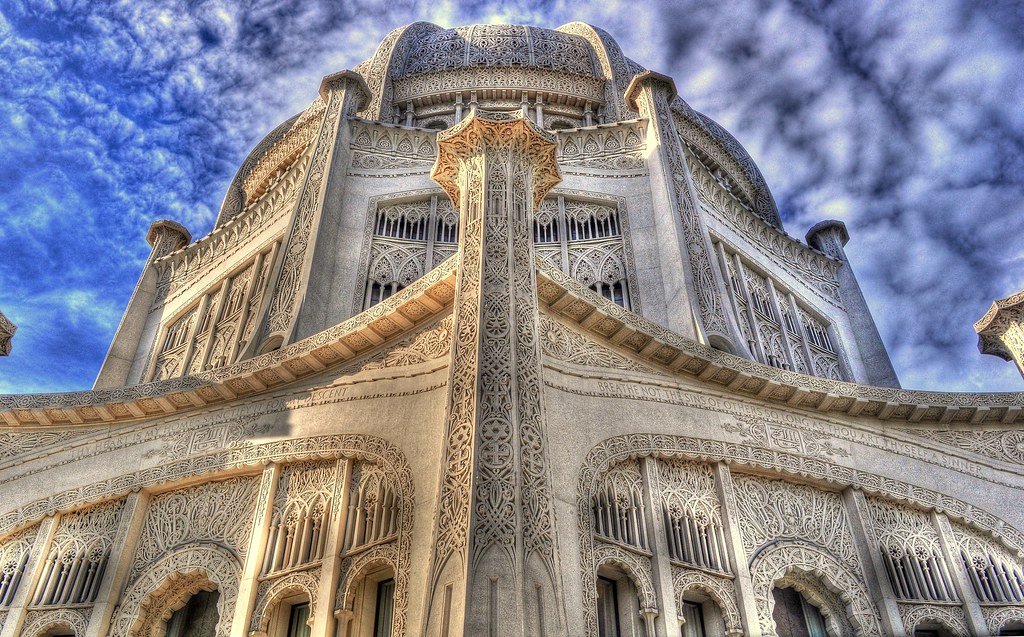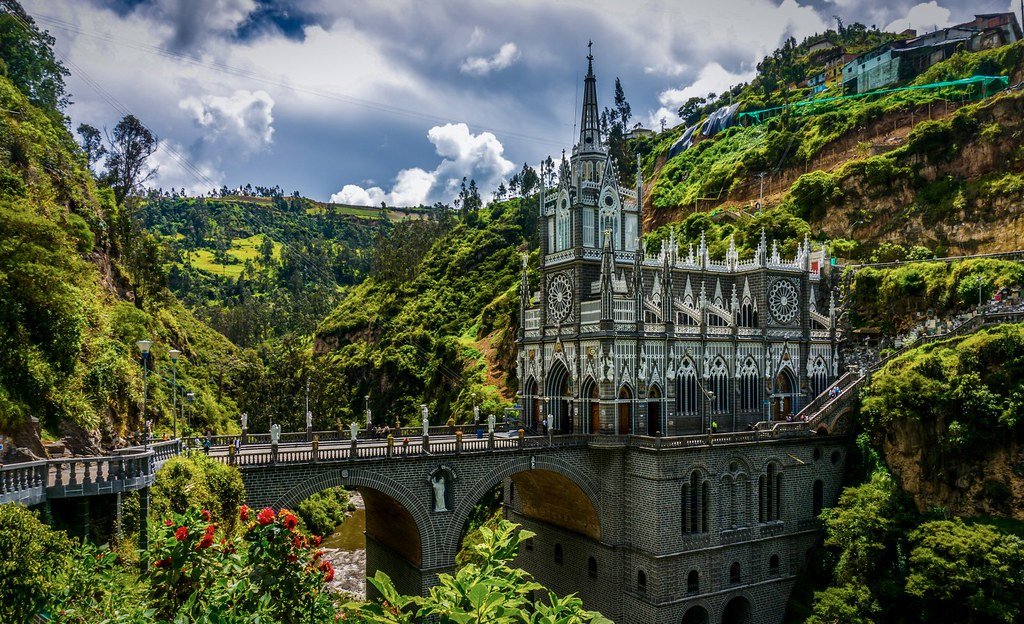The “White Lotus Effect” has driven a surge in tourism to Koh Samui and Thailand, as the hit HBO series boosts global interest in these destinations.
Read MoreThailand’s Progress Towards Marriage Equality
After years of advocacy, Thailand may become the first country in Southeast Asia to legalize same-sex marriage.
A pride flag waving in the wind. Jamison Wieser. CC BY-NC-SA 2.0
Thirty-seven countries currently recognize same-sex marriage on a national level, and Thailand may soon become the 38th. On December 21, 2023, a package of bills including the Marriage Equality Act was introduced by the cabinet, and debates began in Thailand’s House of Representatives, the lower house of Thailand's legislature. This body resoundingly assented to marriage equality in late March, although it is not yet law.
The Marriage Equality Act would amend Thailand’s civil and commercial code, making many terms that refer to people gender neutral. If the bills pass the the Senate, and receive approval from the King, Thailand will become the third country in Asia and the first in Southeast Asia to legalize same-sex marriage.
Four hundred out of 415 members of the House of Representatives voted to pass the Marriage Equality Act on March 27, 2024. The Marriage Equality Act passed the first reading in the Senate with another overwhelming majority on April 2, 2024.
For decades, LGBTQIA+ laws in Thailand have not matched the country’s acceptance of LGBTQIA+ culture and travelers. Despite being home to many LGBTQIA+ spaces, such as bars and nightclubs, and serving as a destination for many to receive gender-affirming care, discrimination continues and many LGBTQIA+ rights in Thailand remain unprotected.
While there has been progress in advancing LGBTQIA+ rights in Thailand with the passage of the Gender Equality Act in 2015, currently non-binary and transgender people’s identities are not recognized and LGBTQIA+ couples are unable to marry and struggle with adoption.
The recorded history of the LGBTQIA+ community in Thailand dates back to the 14th century. These records include verbal accounts and murals depicting LGBTQIA+ relationships. However, in the 19th century, the criminalization of homosexuality and Victorian norms of propriety spread along with European colonialism in the region, although Thailand itself remained independent.
This influence resulted in a cultural shift, as people began to equate sexuality with moral conduct and consider sexuality taboo. Despite this, Thailand has been famously receptive to LGBTQIA+ travelers, with the Thai Tourism Authority promoting Thailand as a “gay paradise”.
As LGBTQIA+ visibility and activism have increased, Thai political figures have begun to follow suit, with the Pheu Thai party making marriage equality a main goal. Since taking office in 2023, the Pheu Thai party has been integral in moving Thailand toward equality for LGBTQIA+ people.
The Marriage Equality Act will undergo its second and third Senate readings in July. If passed, it will be brought to the King for assent, and will then be established within 120 days, making Thailand a role model for the advancement of LGBTQIA+ rights.
Madison Paulus
Madison is a student at George Washington University studying international affairs, journalism, mass communication, and Arabic. Born and raised in Seattle, Washington, Madison grew up in a creative, open-minded environment. With passions for human rights and social justice, Madison uses her writing skills to educate and advocate. In the future, Madison hopes to pursue a career in science communication or travel journalism.
Dive into Songkran: The Thai New Year Festival
Want to experience a month-long celebration featuring water battles in the streets and other amazing festivities? Discover the Thai Songkran Festival.
A water fight during the 2015 Songkran Festival in Thailand. Sano Rin. CC BY-NC 2.0
Thousands of international travelers are drawn to Thailand each year to celebrate the Songkran Festival, also known as Thai New Year. Songkran has been celebrated for thousands of years, but this year is special. In 2023, UNESCO (United Nations Educational, Scientific and Cultural Organization) added the festival to the Intangible Cultural Heritage of Humanity list. In honor of this recognition, the Thai government plans to hold Songkran festivities for the entire month of April 2024, instead of the usual three-day period between April 13th and 15th.
The Songkran Festival has evolved over the years. The first recorded reference to the holiday dates back to the 15th century, with some scholars theorizing that it was derived from the Indian Holi Festival. The Sanskrit word for “movement” is the root of the term “Songkran,” which refers to the movement of the sun from the astrological months of Pisces to Aries during April.
Water is a focal point of many Songkran Festival traditions, symbolizing cleansing and good fortune for the coming year. Rod Nam Dam Hua is a tradition in which youngsters pour scented water on their elders' hands to express gratitude. Scented water is also sprinkled on Buddha statues to bring prosperity, and respect for ancestors is shown by bathing their urns. According to some scholars, the notorious water battles began to promote tourism during the 20th century. Other traditions include offering food to Buddhist monks and bringing sand pagodas to local temples to replenish the sand tracked out of the temples throughout the year.
April is the hottest part of the year in Thailand. If you want to beat the heat by getting soaked during the water battles, check out streets like Khao San Road in Bangkok, or other popular walking streets in cities like Pattaya or Chiang Mai. As locals and tourists drench each other with buckets and colorful squirt guns, music and the aromas of street foods like Thai fried chicken (called Gai Tod) fill the air.
If water fights aren’t your thing, April is still a great time to experience Thailand. Travelers can experience a variety of activities from Thai beauty pageants to boat races. Thailand's natural environments boast breathtaking destinations from white sand beaches featuring coral reefs to lush hiking trails. For those yearning to see some historical wonders, Thailand offers ancient destinations like the city of Ayutthaya and the Phanom Rung temple complex. You can then recover from a long day of fun with revitalizing Thai dishes such as beef curried noodles, called Christao Khao Soy Nuea, or Bangkok Glutton Som Tum, a Green Papaya salad.
As Thais gear up for this year's Songkran Festival, it is important for travelers to stay up to date on Covid-related travel protocols and other ways to be respectful during the celebrations. For all the water-loving cultural fanatics, the 2024 Songkran Festival awaits you.
Madison Paulus
Madison is a student at George Washington University studying international affairs, journalism, mass communication, and Arabic. Born and raised in Seattle, Washington, Madison grew up in a creative, open-minded environment. With passions for human rights and social justice, Madison uses her writing skills to educate and advocate. In the future, Madison hopes to pursue a career in science communication or travel journalism.
VIDEO: Shadows of Bangkok
Bangkok, or Krung Thep, “The City of Angels”, is the capital of Thailand and home to more than 10 million people. The city is a composite of temples, factories, cultural sites, residences and shops. Emerging from political unrest in the 1990s and early 2010s, Bangkok has become a popular destination in its own right; gone are the days when travelers viewed the city as a simple pitstop on the way to Thailand’s beautiful beaches and islands. Escaping “from the typical travel videos that are usually made about Bangkok,” director and scriptwriter Jiajie Yu, based in Barcelona and Madrid, provides a glimpse into the everyday lives of Bangkok’s residents. He showcases “Bangkok in a cinematographic way,” introducing us to the quotidien and silent moments of a city that is usually portrayed as teeming with bright lights and action. Through “faces, alleys, sounds, and music,” Yu creates a subtle yet mesmerizing depiction of Bangkok.
VIDEO: Journey Through Thailand
This footage of Thailand serves as the second installment in Vincent Urban’s series: “In Asia.” The video features glimpses into the vibrant streets of Bangkok and the natural scenery of Northern Thailand. He also features footage from the small but lively town of Pai, located near a mountain base in Northern Thailand. The director includes evocative imagery of Buddhist temples from his visit to the city of Chiang Mai, capital of Chiang Mai province. German director Vincent Urban, based in New York City, concludes the episode teasing his next stop, Laos, for the following installment of the series.
9 Beautiful Houses of Worship Around the World
Different religions have different ways of showcasing their houses of faith.
For many centuries across the globe, people have built houses of faith to honor the higher power(s) they worship. Below is a list of different architectural representations of these sacred spaces.
1. Borgund Stave Church
Borgund, Norway
The portrayal of dragon heads on the roof of the Borgund Stave Church in Norway was built to ward off spirits in 1180. The church was dedicated to Apostle Andrew and has been incredibly preserved. The medieval church received certification in 2010 for being an environmental lighthouse. The church is set to reopen to visitors on April 15.
2. Golden Temple
Amritsar, India
Named the holiest temple in the Sikh faith, the Golden Temple’s upper floors are covered in 750 kilos of pure gold. It was built by Guru Arjan in 1604 and is located in the Northwest of India, near the border of Pakistan. It is said that the waters surrounding the temple in the river Ganga cleanse one’s bad karma when taking a dip. It is visited by 100,000 worshippers daily.
3. Hallgrímskirkja
Reykjavik, Iceland
This Lutheran Icelandic church was built by architect Guðjón Samúelsson and, at 240 feet, stands as the tallest building in the capital and the second tallest in all of Iceland. The design is influenced by the country's volcanoes and the natural surroundings that inhabit the nation. Visible from almost any point in the city, the church is known as one of Iceland’s landmarks and largest church.
4. Kizhi Pogost
Kizhi Island, Russia
Kizhi Pogost. Alexxx Malev. CC BY-NC 2.0
Set on Kizhi Island in Russia’s Lake Onega, Kizhi Pogost is a UNESCO World Heritage site consisting of two wooden churches and a bell tower built in 1714. What makes this an incredible architectural structure is that it was made completely of wood, with no metal or nails involved. Today, the churches are an open air museum.
5. Wat Rong Khun
Chiang Rai Province, Thailand
Designed by Thai visual artist Chalermchai Kositpipat, Wat Rong Khun (also known as The White Temple) was created to honor Buddha’s purity. There are many intricate details in the space, including carvings of monkeys, people and hands among other things. Today, Kositpipat has only completed three of the nine buildings he has plans for. The temple entrance cost is $1.50, Kositpipat will not accept more because he does not want large donors to influence his art. The temple is being run by a team of volunteers.
6. Las Lajas Sanctuary
Ipiales, Colombia
Las Lajas Sanctuary. BORIS Gt. CC BY-NC-ND 2.0
Located less than seven miles from the Ecuadorian border, Las Lajas Sanctuary sits over the Guaitara River. The Roman Catholic basilica has three iconic features. First, the bridge has statues of angels playing instruments on each side. The second is the stained glass by Italian artist Walter Wolf. Lastly, there is an image of the Virgin Mary painted on the back stone wall. The neo-Gothic basilica is surrounded by lush vegetation and was named the most beautiful church in 2015 by The Telegraph.
7. Great Mosque of Djenné
Djenné, Mali
Great Mosque of Djenné. Mission de l'ONU au Mali. CC BY-NC-ND 2.0
Globally known as an example of Sudano-Sahelian architecture and one of Africa’s most famous structures, the Great Mosque of Djenné was built in 1907 from mud and brick, which needs regular replastering to keep its form. Today, the Great Mosque is a UNESCO World Heritage Site and a sacred destination for Muslims.
8. Jubilee Synagogue
Prague, Czech Republic
Jubilee Synagogue. BORIS G. CC BY 2.0
The colorful and intricate Jewish Jubilee Synagogue, also known as the Jerusalem Street Synagogue, was built in 1906 by architect Wilhelm Stiassny to commemorate the Emperor Franz Joseph I’s ascension to the throne. A preserved organ by composer Emanuel Stephen Peter is played for visitors. Today, it is open to the public and used for Orthodox prayer services.
9. Szeged Synagogue
Szeged, Hungary
New Synagogue. Emmanuel Dyan. CC BY-NC-SA 2.0
The second largest synagogue in Hungary, Szeged Synagogue merges Art Nouveau with Gothic, Moorish, Byzantine, Roman and Baroque interior design. The sanctuary’s seating faces a Torah ark made with wood from the banks of the Nile River. The triumphal arch of the building displays the biblical commandment, “Love your neighbor as yourself" in both Hebrew and Hungarian.
10. Temple of Heaven
Beijing, China
Temple of Heaven in Beijing. Fabio Achilli. CC BY 2.0
An imperial sacrificial altar, the Temple of Heaven in Dongcheng District, Beijing is considered the “supreme achievement of traditional Chinese architecture.” It is 273 acres and located in a large park, measuring 38 meters high and 30 meters in diameter, built on three levels of marble stones. It was completed during the Ming dynasty in 1420 and used to pray for harvest and for worship. In 1998, it was named a UNESCO World Heritage Site.
Jennifer Sung
Jennifer is a Communications Studies graduate based in Los Angeles. She grew up traveling with her dad and that is where her love for travel stems from. You can find her serving the community at her church, Fearless LA or planning her next trip overseas. She hopes to be involved in international humanitarian work one day.
10 National Parks to Visit Outside the US
While most people associate National Parks with the US, there are amazing National Parks to visit around the world. Check out glaciers, tropical wetlands, the oldest desert in the world in these parks in Iceland, Namibia, Thailand, India and more.
Read MoreWhere to Travel in 2022
Check out these 20 destinations to consider for your 2022 travel plans. From the Rainbow Mountains of Peru to the Northern Lights of Norway, you will find adventure and more visiting these CATALYST picks.
Read MoreThai Magical Tattoo and Wai Kru Festival: A Short Documentary
With beautiful temples, artwork, and monasteries dating back to the 17th century, the influence of Buddhism on Thai culture cannot be understated. Although Buddhism is the country’s primary religion, its rich history is influenced by Hinduism and Animism — shaping the people’s relationship with religion.
One physical manifestation of these influences comes in the form of Sak Yant tattoos — intricate tattoos believed to be powerful symbols for protection against evil influences. While a traditionally Buddhist practice, these tattoos’ use of magic is a clear sign of Thailand’s other religions shaping its traditions.
The tattoos are blessed by monks every year at the Wai Kru festival, documented in this video. Filmed by Gennaro Ambrosino, this mini-documentary details the spiritual practices behind the tattoos, the rituals of the Wai Kru festival and the altered state of consciousness its attendees often slip into. The transformative nature of the festival mirrors the impact of religion on Thai culture and identity, something still present today.
‘Bad Students’: Thai High Schoolers Turned Political Activists
What started as a group of students protesting clothing and hair restrictions has turned into a political activism movement thousands strong. Thailand’s “Bad Students” are protesting a military-backed government and calling for reforms to the constitution and monarchy.
On Nov. 21, thousands of pro-democracy activists gathered in downtown Bangkok to protest Thailand’s royalist, military-backed government. Some protesters came dressed as dinosaurs, in large, inflatable T-Rex suits, while others carried balloons shaped like meteors calling for the end of the “dinosaur age,” a reference to the conservative attitudes of government officials. The protesters called for the resignation of the current government, headed by Premier Prayut Chan-o-cha, a former army chief, as well as a new constitution to replace the current one, which was written by the military.
Ahead of the protest, three of its organizers were summoned to a police station for questioning: 16-year-old Benjamaporn Nivas and two boys, also high school students. The three teenagers are some of the leaders of the “Bad Students,” a group of pro-democracy students in Thailand that has joined the broader protests against the government.
At first, the Bad Students were focused solely on education reform; they wanted a complete overhaul of the education system, which they say promotes conformity and blind obedience through rote learning and whitewashed history. In August, hundreds of students gathered outside the education minister’s office, demanding no uniforms, no restrictions on hair length, and a modern curriculum. Since becoming a democracy, Thailand has had 13 successful coups, but textbooks ignore pro-democracy history and instead promote the monarchy. Following the August protest, the Bad Students also insisted that the education minister resign, distributing thousands of copies of a mock resignation letter and later even staging a mock funeral for him.
Shortly after their August protest, the Bad Students realized that they would never achieve the reforms they wanted under the current government. Nivas said they learned that “the education ministry is just one part of a bigger, rotten system from the past that needs to be changed,” and that the voices of the Bad Students would be more useful if they joined the broader pro-democracy movements.
Thailand has been at least a nominal democracy since 1932, when it abolished absolute monarchy in favor of constitutional monarchy. Over the years, Thailand has been mostly ruled by military governments, with its monarch serving as head of state. In addition to condemning Chan-o-cha’s military-backed rule, protesters have criticized the monarchy for spending Thai tax revenue and endorsing the military’s role in politics. Maha Vajiralongkorn, Thailand’s current monarch, is being pressured to remain bound by the constitution, to cut ties with the military-led establishment, to open palace books to the public for scrutiny and to repeal Thailand’s lèse-majesté law, which allows imprisonment for defamation of any member of the royal family.
The government did not give ground to pro-democracy activists after the Nov. 21 protest. Chan-o-cha issued a warning that all laws, including lèse-majesté, would continue to be enforced. With neither the government nor the protesters changing their stance, some experts worry that the situation could descend into violence. Others, however, are hopeful. Chan-o-cha appeared in constitutional court on Dec. 2 for a minor infringement, and some saw this appearance as a way for the government to remove him as premier by legal means, thereby ousting him without giving in to the demands of the protesters. The Bad Students and other pro-democracy groups continue to plan, holding rallies and protests while advocating for change and a greater voice for the people.
To Get Involved:
To take action to support the pro-democracy movements in Thailand, sign the Amnesty International petition to defend peaceful protesters here.
Rachel Lynch
Rachel is a student at Sarah Lawrence College in Bronxville, NY currently taking a semester off. She plans to study Writing and Child Development. Rachel loves to travel and is inspired by the places she’s been and everywhere she wants to go. She hopes to educate people on social justice issues and the history and culture of travel destinations through her writing.
This elephant is one of the many forced into long days of multiple rides for visitors in Thailand. UweBKK. CC BY-NC-SA 2.0.
The Dark Side of Elephant Rides
Most of us have had the opportunity to marvel at the world’s most gentle giants, elephants, whether in a zoo, at a circus, or maybe even on a safari. These animals are often used for human entertainment, but at what cost? For the elephants forced to carry humans for hours at a time, the cost may be their lives.
Elephant riding, a practice popular in places like Thailand, has become a regular bucket list item with influencers sparking inspiration atop the majestic animals. While it may seem that these animals are physically equipped, their bodies are simply not meant for such long hauls. In addition, the inadequate living conditions and harsh treatments they are subjected to are all the more reason to refuse elephant rides.
Their mistreatment starts with “phajaan,” or elephant crushing. This training method consists of taking the elephants from their mothers and confining them in a small space. When they are in captivity, they are beaten to submission with bullhooks and nail-spiked bamboo sticks. In combination with the physical abuse they have to endure, elephants are also deprived of sleep and food, then chained when they are not giving rides. By participating in elephant tours, one may unknowingly contribute to this brutal cycle of abuse.
Elephant in chains. Invisible Lens Photography. CC BY-NC-SA 2.0.
This physical abuse also leads to health complications for the elephants. Their bodies are weakened by the trauma, and the hundreds of pounds placed on the center of their spines often leads to permanent spinal injuries. Not only is the human weight an unnatural stress, but the chair, or “howdah,” attached to their backs can rub against their skin, causing open wounds that get infected. It is apparent that the consequences of elephant riding are incredibly harmful.
Some organizations have begun taking steps to remedy this issue. People for the Ethical Treatment of Animals and World Animal Protection created mass media campaigns denouncing elephant riding that have gained significant traction. These campaigns showed graphic images of elephants as young as 18 to 24 months old being chained up and beaten with bullhooks: a small glimpse into these animals’ harsh realities. Tour operators like STA Travel, TUI Group, G Adventures and Intrepid Travel have also contributed to ensuring animal safety with their elimination of most elephant activities.
Even though elephant riding may seem fun, the unethical practices behind it must be resolved in order to keep this endangered species alive and treated well.
Renee Richardson
Renee is currently an English student at The University of Georgia. She lives in Ellijay, Georgia, a small mountain town in the middle of Appalachia. A passionate writer, she is inspired often by her hikes along the Appalachian trail and her efforts to fight for equality across all spectrums. She hopes to further her passion as a writer into a flourishing career that positively impacts others.
A Guide to Chatuchak: Thailand’s Largest Market
Chatuchak Weekend Market is Thailand’s largest market, containing over 15,000 stalls. The market offers anything visitors could want to buy and provides an incredible cultural experience.
If you want to buy anything at all in Thailand, from vintage clothes and home decor to street food and exotic animals, visit the Chatuchak Weekend Market. The market spans 35 acres in Bangkok and contains over 15,000 stalls, making it Thailand’s largest market and one of the largest in the world. Chatuchak is divided into 26 sections and is so expansive that maps are available to help visitors navigate the vendors. Most of Chatuchak’s stalls are open on weekends, hence the common name “Chatuchak Weekend Market,” but a number of stalls are open during the week as well.
Chatuchak Weekend Market, also known as “Jatujak” or “JJ Market,” opened over 70 years ago. It began as a small, local Bangkok market called Sanam Luang in 1942. The market opened as a result of the rule of Thailand’s third prime minister, Field Marshal Plaek Phibunsongkhram, who ordered that every town have its own flea market in order to promote trade and boost the local economy. The market was relocated numerous times over the years until it was permanently established in Chatuchak in 1982 and officially named Chatuchak Market five years later. Today, the market receives an estimated more than 200,000 visitors each weekend and is known around the world as a landmark and a must-see destination in Bangkok.
Due to Chatuchak Market’s incredible size, it can seem daunting to visitors. However, many people say that spending a day in the market wandering and hunting for what you want is an exciting part of the Chatuchak experience, and navigating the market is not as difficult as it may appear. Visitors to Chatuchak can pick up complimentary maps showing the locations of vendors from kiosks along the main road, which circles the entire market. This main road branches into a number of smaller alleyways called “soi,” which make up the market’s 27 sections. These sections are not organized by product; clothing, for example, is found in nearly every section, but the numbered areas will help visitors get their bearings. Additionally, there is a Chatuchak Guide app available for iOS and Android that displays a live map and allows users to search for products and stalls.
Vendors at Chatuchak Market control their own operating hours, so the market does not open or close at a set time. It is listed as being open from 9 a.m. to 6 p.m. on Saturdays and Sundays, but many vendors will remain open as long as there are customers around. For visitors who want to explore the market but will not be in Bangkok over a weekend, smaller sections of the market open on Wednesdays, Thursdays and Fridays. The plant section opens from 7 a.m. to 6 p.m. on Wednesdays and Thursdays, and the wholesale section from 6 p.m. to midnight on Fridays.
Bartering is common in Thailand, so prices at most Chatuchak stalls are negotiable unless otherwise posted. The Chatuchak Market website notes that the best approach to bartering is “smiling and being polite,” and not being concerned about walking away if you don’t get the price you’re hoping for. Since Chatuchak has over 15,000 stalls, you’re likely to be able to find a better deal at another stall, and you can always return and renegotiate later.
It is recommended that travelers planning to visit Chatuchak Market spend at least three hours for a brief visit and five hours or longer for a more in-depth look.The best time to arrive is in the morning to give yourself ample time to explore. Visitors should dress in comfortable clothing and shoes. There are public restrooms throughout the market. Chatuchak Market is easily accessible by public transportation such as Skytrain, subways and buses, or by taxi or tuk-tuk, a motorcycle with a small carriage for seating two to three people.
Chatuchak Market is a wonderful place to spend a day while in Bangkok. It offers visitors an opportunity to experience a piece of Thailand’s history and culture, taste authentic Thai street cuisine like pad thai and coconut ice cream, and browse a wide range of unique products.
Rachel Lynch
Rachel is a student at Sarah Lawrence College in Bronxville, NY currently taking a semester off. She plans to study Writing and Child Development. Rachel loves to travel and is inspired by the places she’s been and everywhere she wants to go. She hopes to educate people on social justice issues and the history and culture of travel destinations through her writing.
Gulf of Thailand
A travel to the islands of the Gulf of Thailand, discovering 3 contrasting places : Koh Samui, Koh Phangan and Koh Tao. Three islands with immaculate beaches, jungle, venerated temples, great aquatic life and of course the smile of Thai people.
Filmed & Edited by Gilles Havet
How to Find Authenticity in a Globalized World
Why do we travel?
For those of us privileged enough to be able to travel voluntarily, reasons often include becoming more fully ourselves and experiencing something genuinely different. This desire for authenticity, in ourselves and in that which we perceive to be other and outside our current experiences, is widespread enough to be noticed and exploited by the tourism industry, with signs reading “experience the REAL Thailand” and “find yourself in Bali”.
Seeking authenticity in our travels comes from a good place. It highlights our desires for genuine interactions with other human beings, for learning about the experiences of those with different life paths and identities, and possibly even for utilizing our privilege to support real people instead of opportunistic corporations removed from the locations in which they operate.
However, as is the case with many good intentions, this desire for authenticity can be harmful. Much of this harm stems from a strict and arbitrary idea of what counts as authentic and the fact that the privileged traveler has the power to decide what makes the cut. For instance, while spending 3 months in Zimbabwe a few years ago, I asked several friends what their cuisine had looked like prior to British colonization. As their current main foodstuff, a labor-intensive dry porridge called sadza that holds its shape when spooned onto a plate, is made of cornmeal, it couldn’t have existed prior to the transfer of corn to Africa from the Americas. I’ve had similar questions about Italian, British and South Asian cuisines before tomatoes, potatoes, and chili peppers made a similar journey. From my perspective, sadza was a colonial by-product, as was the black tea served alongside it. When I shared this view with my friends, the effect was clear: my strict and arbitrary definition of what could be considered authentically Zimbabwean delegitimized and minimized their identity and emotional ties to the food they knew and loved.
This highlights a tendency in our search for authenticity - to regard older traditions and cultural forms and those which predate recent cultural exchange as more authentic. This viewpoint is understandable, especially as a reaction against the infiltration of Western corporations such as Coca Cola into most crannies of the world, including a remote village in eastern Zimbabwe, and the Westernization of many popular tourist destinations, from food offerings to street signs. Yet the reality is that all places and peoples are dynamic. Historical and current globalization, the movement of people, ideas and things, has fostered cultural exchange and the transformation of traditions over time. Cultures also evolve without interaction with outside forces. When we define authenticity as similarity of a particular part of a culture to its version at a particular point in history, we mistakenly regard people and places as static, freezing them in time.
Aside from our tendency to award authentic status to more longstanding traditions, we also withhold this label unless the cultural form feels “other” enough and different enough from our cultural forms to be plausibly untainted by them. But ironically and cruelly, our globally dominant culture and associated language simultaneously demand conformity for material gain and social acceptance. Without this, the inherent amount of difference between cultures would render many practically inaccessible to travelers.
When we travel in search of authenticity with these unconscious assumptions and unfair expectations lurking in our minds, we often end up unknowingly demanding that locals perform a certain version of their culture for our tourist dollars. The result is a paradox: we want specific historical versions of cultures that are different enough from our own to feel authentic but similar enough to actually understand and enjoy. We travel to search for authenticity, but by traveling we reinforce the global dominance of our culture which demeans and degrades the other cultures we seek to experience. Seeking authenticity obscures it from us.
It also shortchanges us. Traveling with a particular idea of what authentic looks, tastes, smells and sounds like creates expectations and takes our attention away from what is. When we’re less present with ourselves, where we are, and the people around us, we’re less likely to feel deeply satisfied in addition to being more likely to cause accidental harm.
So, what to do? Here are some guidelines for navigating these realities:
1. Take people and places as they are now
Don’t force them to live up to some idea conjured up by tourist companies, history books, or your own mind as the antithesis to your everyday life. Don’t expect them to be similar enough to be accessible and understandable to you. On the flip side, don’t expect them to be different enough so that you can feel like you’ve escaped your daily grind and your culture. Manage your expectations or avoid forming them. Of course, it is very hard to travel with no inkling of what you’re going to find once you arrive, but be honest with yourself. Why are you drawn to particular places? What expectations do you have? Find balance - have just enough foresight to plan yet not enough to keep you from accepting what is when you’re there. The best days often come when you're not expecting them.
2. Only do what you actually want to do
Travel guides and guidance from friends are riddled with “must sees”. What if nothing on those lists strikes your fancy? I almost always skip museums when I travel. While you could argue that I’m missing out on important historical context, I would argue that I’ve never absorbed this information from museums even when I’ve forced myself to go to them. Luckily, each place and culture and even person is unfathomably complex and contains endless dimensions. Engage in the same activities you enjoy in back home and try new ones which feel right. Do you in a new place. By living your truth while traveling, you’re more likely to find authenticity in the place you’re visiting.
3. Engage other cultures carefully
Cultural exchange can be mutually beneficial but it can also be oppressive. Acknowledge the power dynamics in your interactions with non-travelers. Be aware that you probably embody and therefore unknowingly reinforce ideals that other people must conform to in order to gain social currency and acceptance. And make sure your engagement with other cultures doesn’t cross the line into appropriation. Appropriation can take many forms, but it almost always involves travelers benefiting materially from or being praised for a particular cultural form while the people to whom that cultural form belongs are ridiculed, persecuted, or exploited for it. Engage from a place of humility to learn, not to seek validation or make money. Always respect the stated boundaries of engagement, and where appropriate, wait to be invited.
SARAH LANG
Instigated by studies in Sustainable Development at the University of Edinburgh, Sarah has spent the majority of her adult life between 20+ countries. She is intrigued by the global infrastructure that produces inequality and many interlocking revolutionary solutions to the ills of the world as we know it. As a purposeful nomad on a journey to eradicate oppression in all its forms, she has worked alongside locals from Sweden to Zimbabwe. She is a lover of compassionate critique, aligning impacts with intentions, and flipping (your view of) the world upside down.
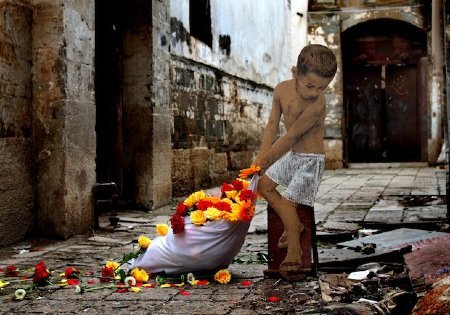
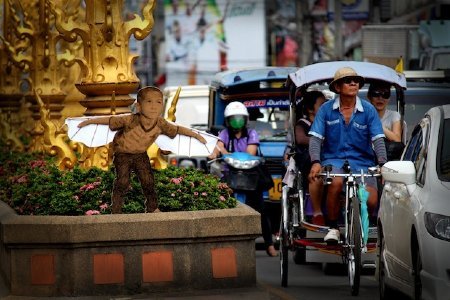
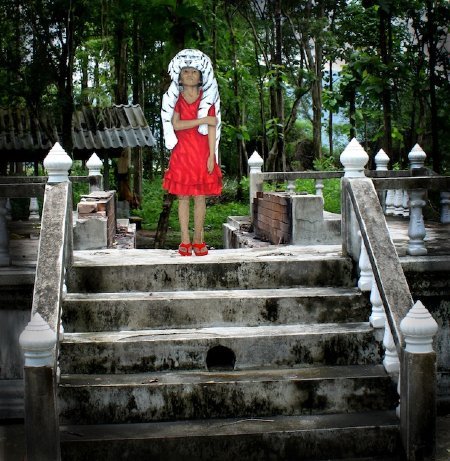
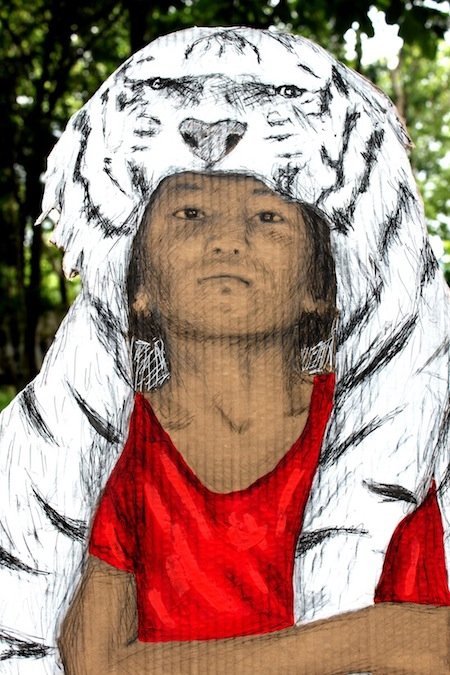
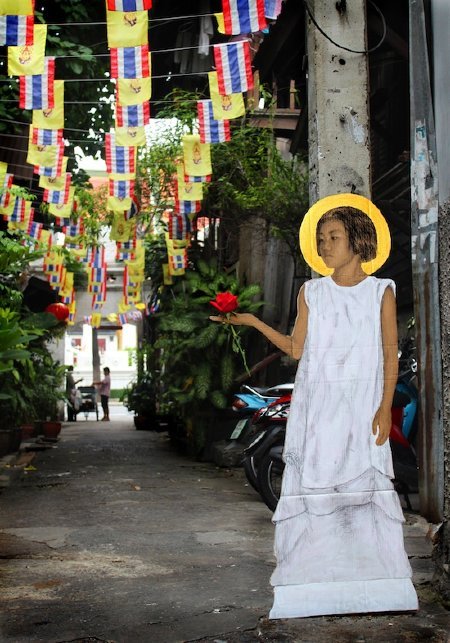
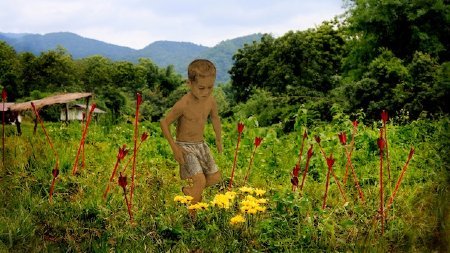
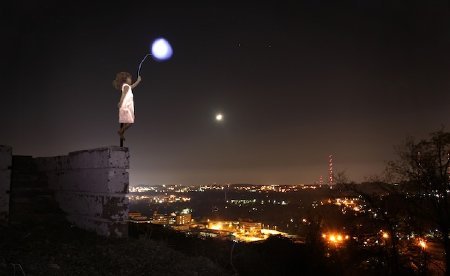
THAILAND: Street Orphans Transform Into Art
I've been making street art since 2009 and have traveled to 13 countries to focus on children who are homeless and living on the street. I make cardboard cutouts that I mount to walls with high tack mounting tape or propped up as stand alone pieces. If no one removes them from the streets, the pieces will decay and be destroyed by the harsh environment. If someone does take it, then they can keep it in their home. If it survives, there is hope for them to continue on as pieces of art, just like there is hope for the actual homeless and street kids.
During my last trip to Asia I stayed in an orphanage in northern Thailand and got to know the kids there. I spent two months with them, listening to their stories, and then I represented these young people in this body of my recent work.
The most memorable stories were of two children named Chai and Lee, who were so malnourished that their little stomachs were swollen when they first came to the orphanage. To get food they would steal the offerings to Buddha in their tribal villages. With this money they would buy snacks, since the only thing they had to eat was white rice, which has hardly any nutritional value. The piece with the arrows (below) is about how Chai had a lot of things in life thrown at him, trying to destroy him, but instead, he focused on the beauty in life. The main thing I learned from this trip is that children find beauty and can reveal it to the rest of us.
MICHAEL AARON WILLIAMS : My art is a narrative, visual poetry, making a social statement to move the viewer to action or realization. An important part of my work focuses on the street, the place where people live their daily lives. This allows me to interact with an audience on their own turf and observe how they react to the art; it is a social experiment. These open-air installations focus on the ephemeral state of street people and enable the viewer to participate in the outcome of the pieces, whether the viewer leaves or saves them from the street. My goal in depicting street people is to show their beauty, fragility, and to bring their situation into the eyes of the viewer, refusing to let them be forgotten or ignored.
Learn about how to help the orphanage at Orphans Assistance and Rescue
Our Daughters For Sale Documentary (2012): Sex Trafficking In Thailand
High in the hills of Thailand are villages where selling children for profit—not for survival—is commonplace. While the government would prefer to say that no such problem exists—one organization stands in their way. The Children's Organization of Southeast Asia (COSA) is working on a new method to stem the tide of child sex trafficking in northern Thailand. While most other organizations 'rescue' children who have already been sold and been victimized. In villages where satellite dishes and other amenities have taken the place of sold children, COSA is working to educate villagers on the benefits of not selling children—they are working on an individual basis to solve the problem for each child before it happens.
CONNECT WITH COSA
GRINGO TRAILS
How do travelers change the remote places they visit, and how are they changed? GRINGO TRAILS, a new documentary film, offers answers—some heartbreaking, some hopeful. From the Bolivian jungle to the party beaches of Thailand, and from the deserts of Timbuktu, Mali to the breathtaking beauty of Bhutan, GRINGO TRAILS shows the dramatic long-term impact of tourism on cultures, economies, and the environment, tracing some stories over 30 years. Backpackers and local inhabitants tell startling stories of transformation, for good and ill.
This film will premiere at the Margaret Mead Film Festival at the American Museum of Natural History on October 19th.
CONNECT WITH GRINGO TRAILS
Sixpenny Globe - Around the World on the Cheap
After obtaining a college education and trudging through a year of minimum-wage jobs and unpaid internships, Kelsey Ogden and Kristen Refermat agreed that some extra spice was needed in their lives. For many, the remedy for such a dilemma might be a simple tropical holiday - complete with frozen margaritas and white sanded beaches. This however was not the case for these two. Instead, Kristen and Kelsey quit their jobs and bought two round-the-world tickets; on credit. Through their travels Sixpenny Globe was born - a new web series documenting their budget-traveling, hitchhiking, couchsurfing escapades around the world and back.




